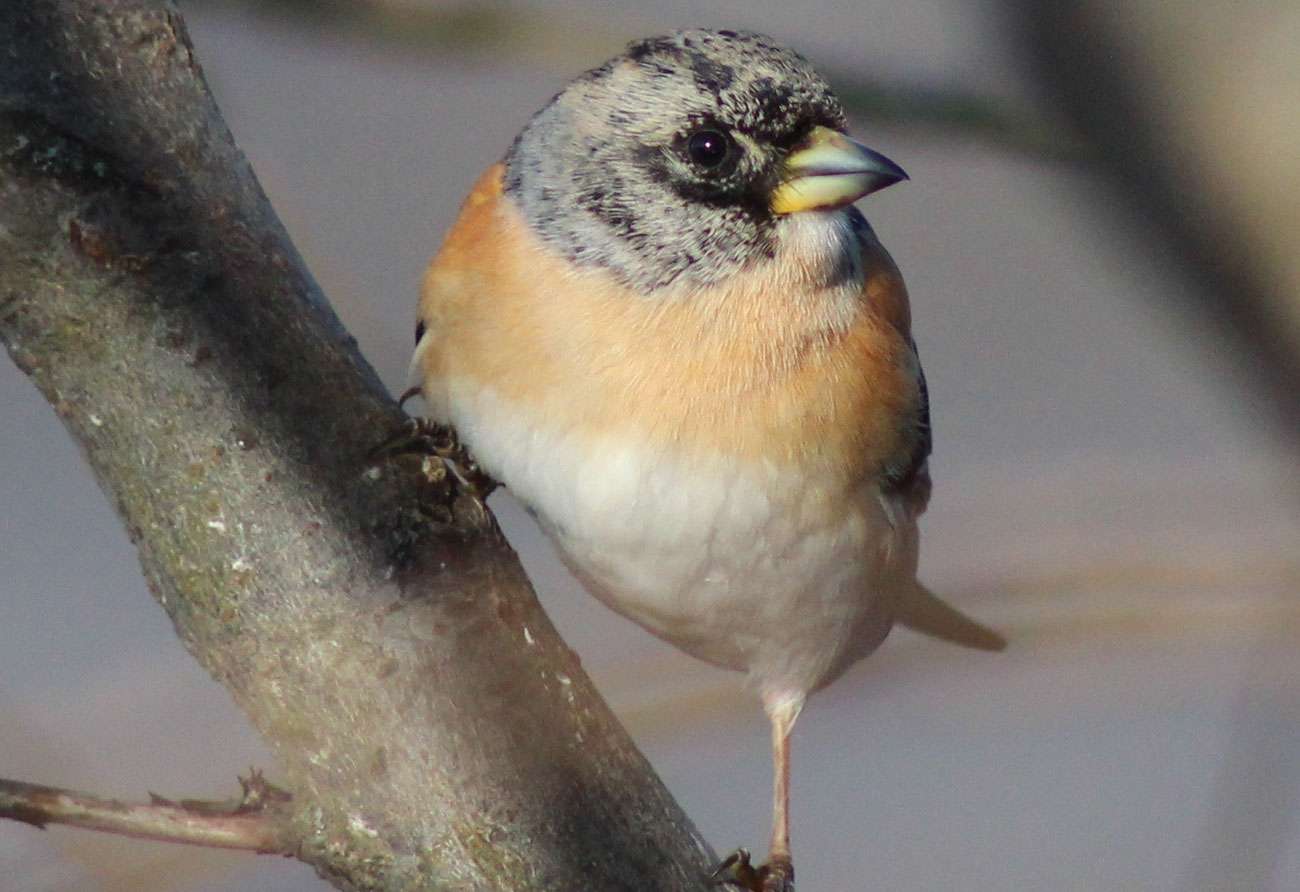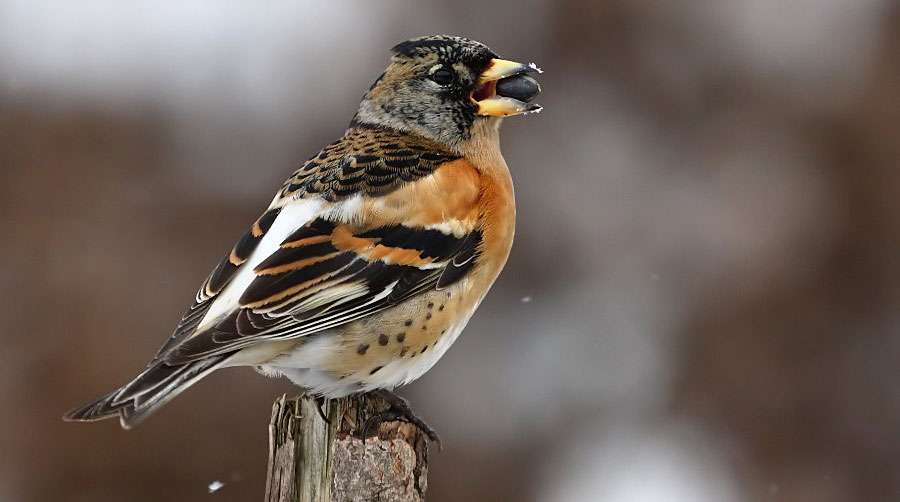
Brambling (Fringilla montifringilla)
If you had your eyes set on a 2020 vision this month, and want to see something often overlooked, then why not kick off the New Year with a trip down on the beech?
Among the trees I mean, not by the seaside – although that is an increasingly popular destination on 1 January for those wishing to rekindle warm summer memories in the depths of winter.
For in the woods of the Surrey Hills at this time of year there are yet new delights to behold among the fallen amber leaves. The sweet chestnuts are long gone but other seasonal ‘fruits’ provide a feast for the eyes. Bramblings.
These mostly black and orange dazzlers may be found busy snuffling amongst the leaf litter looking for lunch. They are like little tigers from the Taiga.
It is the beech mast they are after and its availability in places like Holmbury Hill and Winterfold provides them with an important lifeline. Some mast gets squashed by passing cars on the country lanes so you might even see these birds without getting your feet muddy.
Bramblings are generally shy finches and, in my experience, they rarely frequent small garden feeding stations. But you could always get lucky. Or have a big garden.
Their faded plumage at this time of year means they can be easily overlooked among their more common cousins, the Chaffinches, often feeding alongside them.
Watch out for their distinctive black-tipped yellow bills (black in summer), the feint lines down the back of the neck, and a long white rump revealed when they are disturbed and fly up into the treetops.

Brambling – male (Fringilla montifringilla)
Bramblings are another of our winter visitors who arrive from as far away as Siberia. I’ve heard their haunting song in the birch and conifer woods of Norway and it’s not one of the best. It has been likened to the sound of a wood-cutting saw and is rarely encountered here.
But a tell-tale identification feature to listen out for is a harsh, drawn out wheeze which they often give in flight. They started appearing again in mid-October last year, heading south west, and many will have gone to sunnier climes in southern Europe.
These birds seem particularly attracted to the red berries of the local Whitebeam, if earlier arriving species from the north like Ring Ouzels have not nabbed the harvest first. It is likely they will be very hungry after such long journeys and then they can be very tame.
One memorable morning 15 months ago, as many as 40 were just above my head feeding in just one tree in the Surrey Hills. But passing dog walkers, cyclists and walkers missed the show as they either had their eyes to the ground or were checking their mobile phones.
As soon as the fruit is gone many Bramblings seem to resume their Autumn migration ramblings.
But some can hang around and in this second part of winter may form loose flocks as they are joined by Scandinavian reinforcements forced south as more snow scuppers access to their food sources.
Some years the Brambling may not appear at all when you hope it will but keep an eye open and an ear peeled. You may get one going back up north in the Spring as it flies overhead. I once saw one as late as 11 May, calling from his perch on top of a Scots Pine along the Greensand Way.
Perhaps he mistakenly thought he was already home. Now in a summer plumage of glossy black head and back, contrasting orange throat and breast, grey spots on the white belly and orange, black and white wings, he was clearly ready for breeding. A vision to behold.
Twitter – @Crane_Spotter
Click here to see all of Robin Stride’s previous Crane Spotters.











